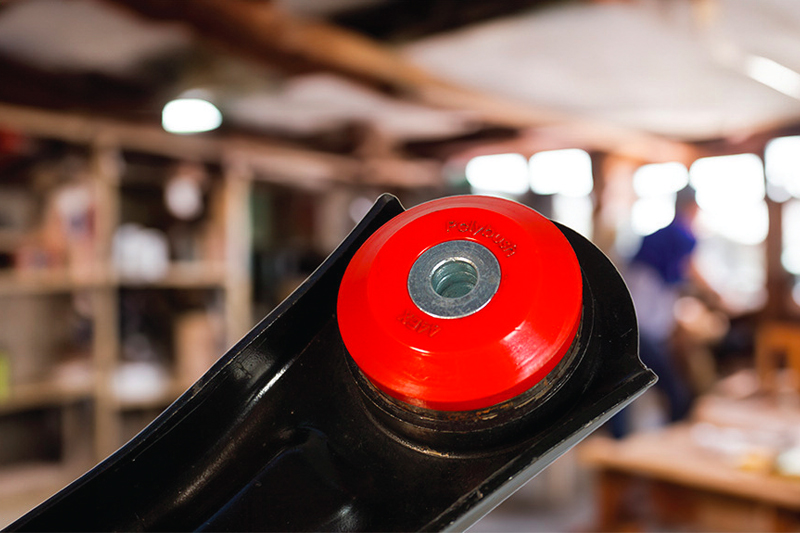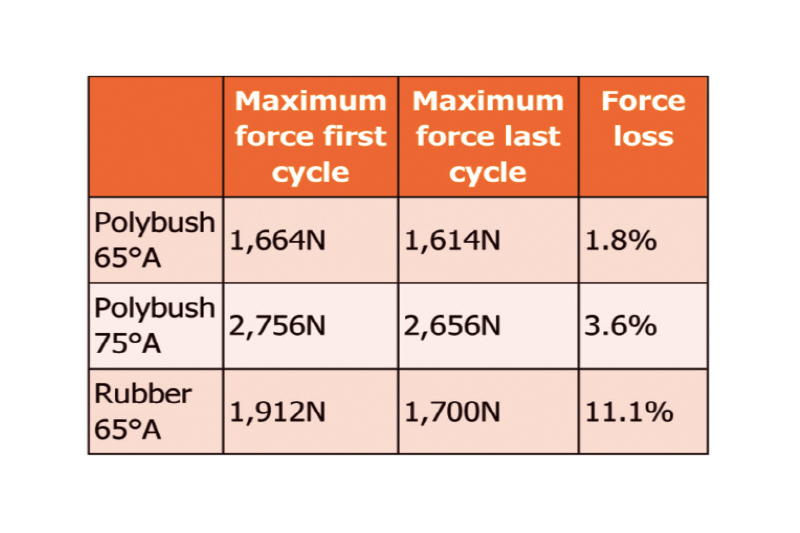What do polyurethane bushes offer?

There are certain bushes on cars that fail regularly, according to Polybush, and are often difficult to replace, as well as costing time and money. The company believes it has a solution that lasts four to five times longer than the original fit, namely in polyurethane bushes. Its marketing co-ordinator, Ellis Blackman, explains:
Rubber bushings have issues; from compression set to vulnerability to oil, fuel, and road grime. Rubber can rip, de-bond, and lose structural integrity over time. In contrast, polyurethane excels at every step; they are impervious to compression set, oil, fuel, and road salts, offering outstanding levels of reliability.
What do polyurethane bushes offer?
- Increased longevity: Solutions for Mondeo MK4’s rear trailing arm bushes or Astra MK6 rear beam bushes, for example, outlast their rubber counterparts by four to five times. The company develops solutions with technicians in mind, tackling notorious headache points.
- Improved control: Installing polyurethane bushes injects a shot of adrenaline into a steering system. Motorists will experience a tighter, more precise connection between the steering wheel and the road.
- Increased tyre life: Polybush saves consumers money by reducing tyre wear, install time, and offering a fit-and-forget product.
- Comfort: Will upgrading to polyurethane sacrifice the comfort of a vehicle? Fear not. Polyurethane can match the original hardness of ‘normal’ cars, ensuring no compromise on the smooth, comfortable ride customers expect.
- Easy to fit. No special tools are required; technicians can remove the rubber bushes as they usually would, and most bushes can just be pushed in by hand. To finish the job, technicians can simply use a vice or hammer to drive the centre tube home.
OE supplier
Polybush is an OES; it manufactures polyurethane suspension parts for road sweepers, heavy forklift trucks, earth moving machines, EVs, buses and tractors. It also supplies to companies upgrading vehicles. This can be for armoured 4×4 luxury cars or upgrades of standard vehicles for military and paramilitary purposes. Polybush also supplies to armies and police forces that need longevity in the field by switching from rubber to polyurethane.
The company makes all polyurethane and steel parts in its factory in Wrexham, North Wales. This includes all the computer aided design of the parts and the necessary tooling. Once designed, all the tooling is, again, made in-house using computer aided manufacturing on its Mazak milling and turning centre machines.

Put to the test
Over 20 years ago, a bus manufacturer was faced with rubber anti-roll bar (ARB) link bushes failing after only three to four months. It asked us to produce the same part in polyurethane. The parts were compared at the infamous Millbrook Proving Ground in Bedfordshire – the results?
- The rubber vehicle suspension bushes failed after 5,000 to 15,000 cycles.
- Polybush’s polyurethane vehicle suspension bushes lasted 55,000 cycles.
- Polybush’s polyurethane vehicle suspension bushes were measured at 10 to 15°C cooler than the rubber bush while operating on the test bed.
- When fitted to the bus, Polybush’s polyurethane vehicle suspension bushes did not change the ride of the vehicle.
- Polybush has been supplying these bushes on new-build and for spare parts for 20 years, replacing all the ARB system rubber bushes with polyurethane.

In another example, Polybush solved the problem of permanent compression set a vehicle builder was having with its standard rubber bushes. These bushes were permanently compressing under load and then splitting radially. Polybush ran trials to compare this 65°A rubber bush with two Polybush grades 65°A, i.e., the same hardness and 75°A, 10 points harder.
The three samples were compressed at 30mm per minute to 50% of their original thickness and relaxed at the same rate. This cycle was repeated without interruption over 20 cycles.
The actual force and reduction in force between the first and last cycle were:

The table shows how quickly the rubber vehicle suspension bush permanently compressed compared to the equivalent hardness of Polybush. Once in this state, the rubber bush’s resilience and ability to flex is greatly reduced causing splitting and failure.








